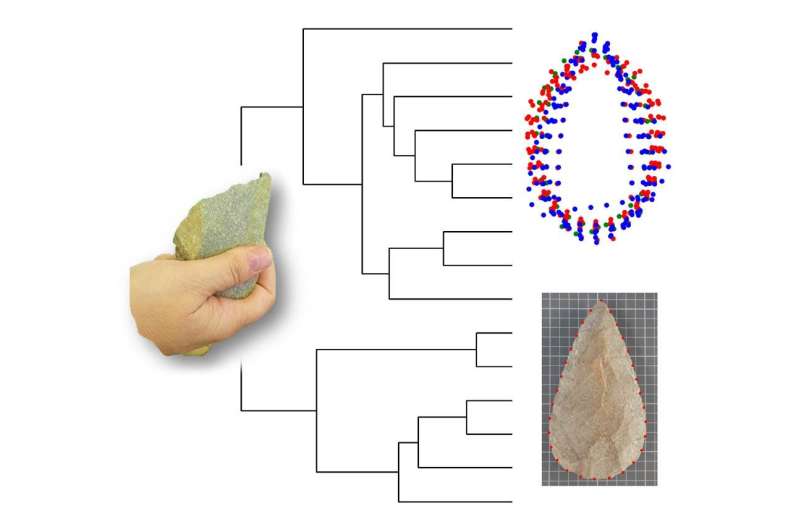Credit: Emiliano Bruner et al
The Paleoneurobiology group of the Centro Nacional de Investigación sobre la Evolución Humana (CENIEH), led by Emiliano Bruner, has just published, in collaboration with the Museo de la Evolución Humana (MEH) in Burgos and the company Sociograph from Valladolid, a new paper on cognitive archaeology in which the hand-tool relationship is studied, analyzing the geometry of the tools, the grasp of the hand, and the electrical responses of the skin (electrodermography).
The paper introduces the relationships between prehistory and neurosciences, and those between working memory and visuospatial integration. In particular, it centers on how tools influence our cognitive mechanisms, by altering the perception of the body and of space.
Prehistoric tools are crucial to interpreting the cognitive skills of extinct human species. Studying their shape is conducted using geometric and spatial models, and this is integrated with studies of their patterns of handling.
Using electrodes, electrodermal methods record variations in the levels of attention during the interaction between hand and tools, revealing differences between individuals or between different kinds of tools. These methods are usually used in neuromarketing to quantify the emotional responses to commercial stimuli.
The paper, titled "Visuospatial integration and hand-tool interaction in cognitive archaeology," has been published in a volume dedicated to visuospatial attention and working memory of the series Current Topics in Behavioral Neurosciences (Springer), edited by Timothy Hodgson, professor of cognitive neuroscience at the University of Lincoln (United Kingdom), who is an expert on Parkinson's disease.
More information: Visuospatial Integration and Hand-Tool Interaction in Cognitive Archaeology. In: . Current Topics in Behavioral Neurosciences. Springer, Berlin, Heidelberg doi.org/10.1007/7854_2018_71
Provided by CENIEH
























